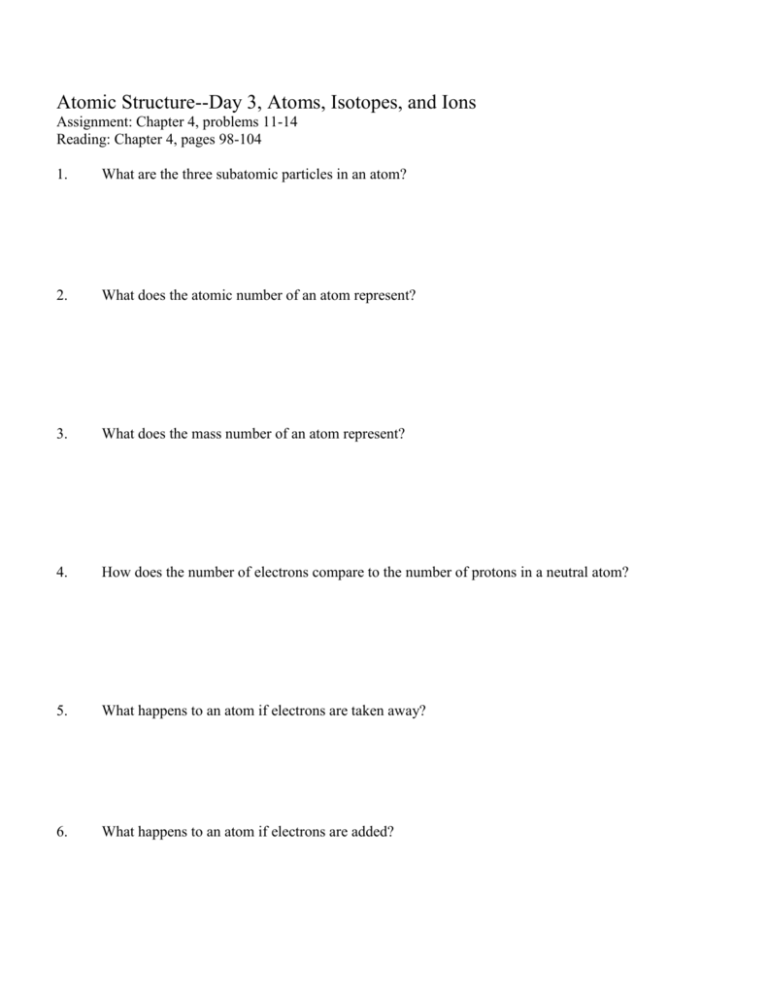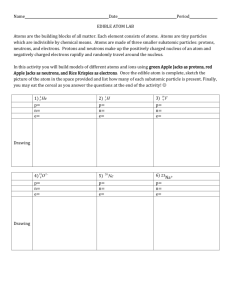Atoms, Isotopes, and Ions
advertisement

Atomic Structure--Day 3, Atoms, Isotopes, and Ions Assignment: Chapter 4, problems 11-14 Reading: Chapter 4, pages 98-104 1. What are the three subatomic particles in an atom? 2. What does the atomic number of an atom represent? 3. What does the mass number of an atom represent? 4. How does the number of electrons compare to the number of protons in a neutral atom? 5. What happens to an atom if electrons are taken away? 6. What happens to an atom if electrons are added? 7. What do you call an atom that has had electrons added or taken away? 8. Do all atoms have the same number of neutrons in the nucleus of an atom? 9. There are two types of carbon atoms: one with 6 protons and 6 neutrons in the nucleus and one with 6 protons and 8 neutrons in the nucleus. What are these called? 10. In the following table all of the atoms are electrically neutral. Complete the table. Symbol Na Name Mass Number 23 Protons Tin 82 20 10 F 19 In the following table all of the atoms are not electrically neutral. Complete the table. Symbol Na+ Name Mass Number 23 Protons Tin II ion Hg2+ Neutrons Electrons 68 48 20 19 18 80 201 Phosphide ion Cl12. Electrons 68 207 11. Neutrons What happens to an atom when you change the number of: Protons Neutrons Electrons








